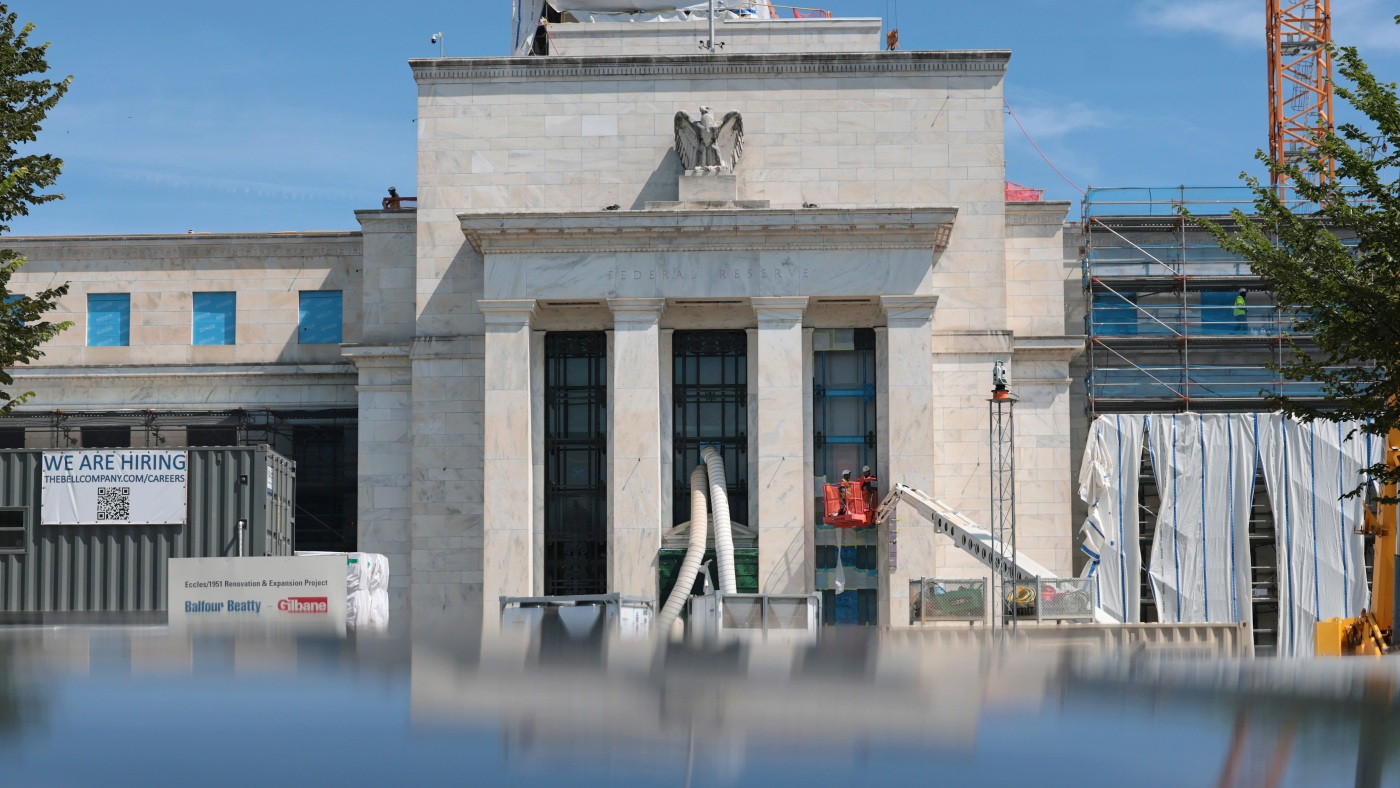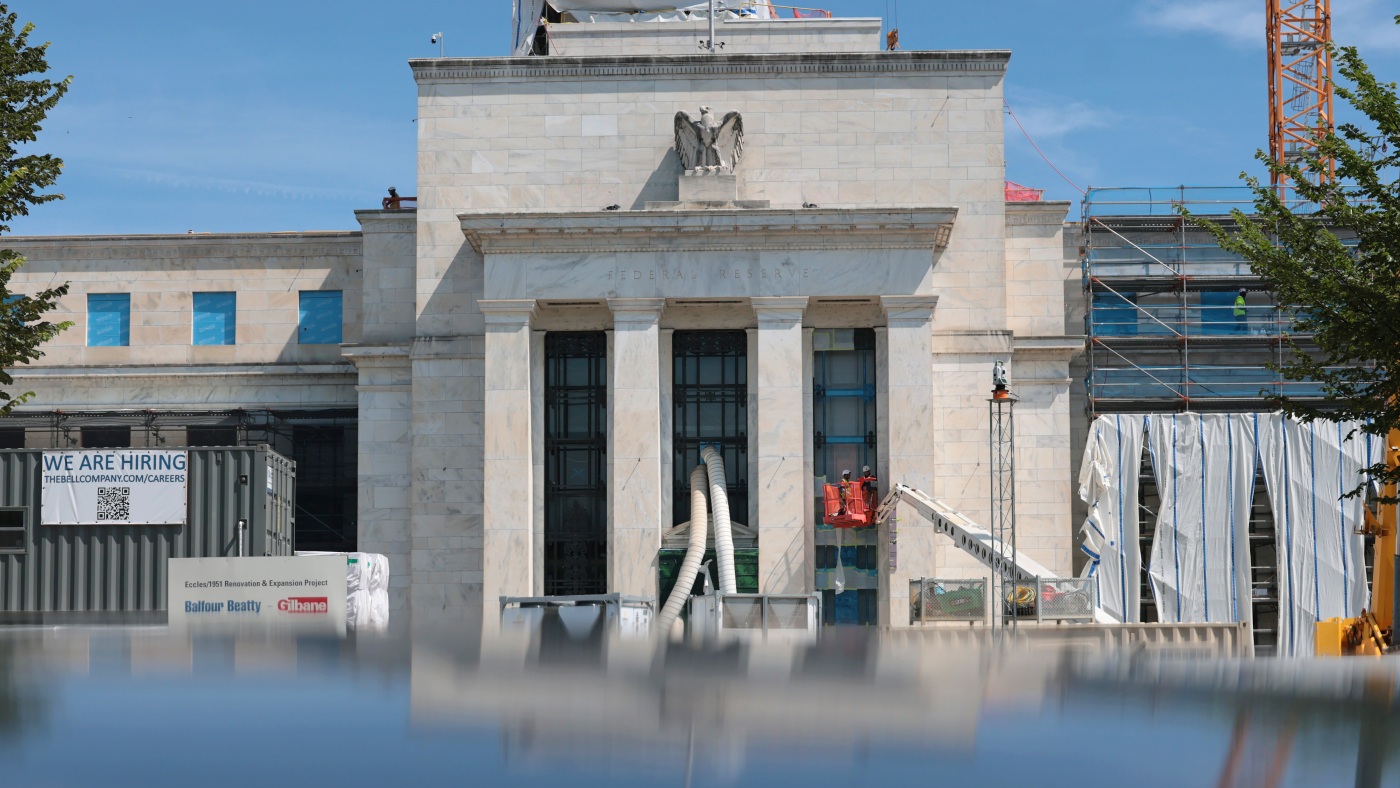The Renovation Rumble: Trump, Powell, and the Fed’s Fiscal Facelift
Introduction: A Clash of Titans
The Federal Reserve, often seen as the bastion of economic stability and independence, found itself at the center of a political storm when former President Donald Trump paid a rare visit to its headquarters. What began as a routine inspection of ongoing renovations quickly escalated into a public spat between Trump and Federal Reserve Chair Jerome Powell. This confrontation was not just about the escalating costs of the Fed’s building renovations but also about the broader tensions between the executive branch and the central bank. The episode highlighted the delicate balance of power within the U.S. financial system and the enduring struggle to maintain the Fed’s independence.
The Backstory: A President and His Fed
Trump’s relationship with the Federal Reserve was anything but cordial. Throughout his presidency, he repeatedly criticized the Fed’s monetary policy, particularly its interest rate decisions. Breaking with decades of tradition, Trump openly questioned the Fed’s actions, suggesting that they were hindering economic growth. His criticism was not limited to policy; he even went so far as to suggest that Powell should be fired. This unprecedented pressure from the executive branch raised serious concerns about the independence of the Federal Reserve, a cornerstone of U.S. economic stability.
The Fed’s independence is designed to insulate monetary policy from short-term political pressures, allowing it to focus on long-term economic goals such as price stability and full employment. Trump’s actions, however, threatened to undermine this independence, creating a climate of uncertainty. The visit to the Fed’s headquarters was not just about renovations; it was a continuation of Trump’s broader campaign to influence the central bank’s decisions.
The Renovation Inspection: More Than Meets the Eye
The official reason for Trump’s visit was to inspect the ongoing renovations at the Federal Reserve headquarters. While this might seem like a mundane task, it provided a convenient pretext for Trump to engage with Powell and reiterate his criticisms. The renovations themselves became a symbol of what Trump perceived as wasteful spending and mismanagement within the Fed. By focusing on the cost overruns, Trump aimed to publicly undermine Powell’s leadership and further pressure the Fed to align with his economic agenda.
This tactic was clever, as it shifted the focus from complex monetary policy debates to a more relatable issue: taxpayer dollars and government spending. It allowed Trump to frame the Fed as an institution that was out of touch with the concerns of ordinary Americans. The renovation costs, while relatively small in the grand scheme of things, became a symbol of broader issues related to government spending and accountability.
The Tussle: A Clash of Styles and Philosophies
Reports indicate a direct disagreement between Trump and Powell regarding the final cost of the renovation project. This seemingly minor disagreement encapsulated a deeper clash of styles and economic philosophies. Trump, known for his business background and penchant for deal-making, likely viewed the cost overruns as a sign of incompetence and a failure to control spending. Powell, on the other hand, likely defended the renovations as necessary for the long-term functionality and security of the Federal Reserve, arguing that such projects inevitably involve unforeseen costs and complexities.
Furthermore, the disagreement highlighted the differing perspectives on the role of government spending. Trump, while often advocating for tax cuts, also expressed concerns about government debt and advocated for fiscal responsibility. Powell, while focused on monetary policy, understands that fiscal policy also has an impact on the economy. The exchange over the renovation costs provided a public forum for these contrasting views, even if the specific issue was relatively small in the grand scheme of things.
The Implications: Independence Under Pressure
Trump’s visit and his public disagreement with Powell sent a chilling message about the independence of the Federal Reserve. The President’s willingness to directly criticize the Fed Chair, even on a seemingly trivial matter, undermined the credibility of the central bank and raised concerns about political interference in monetary policy. This pressure, whether intentional or not, created a climate of uncertainty and could potentially influence the Fed’s decisions in the future. The independence of the Federal Reserve is crucial for maintaining price stability and fostering sustainable economic growth. When political considerations overshadow economic realities, the long-term health of the economy can be compromised.
The visit also served as a powerful reminder of the importance of transparency and accountability within the Federal Reserve. While the Fed operates with a degree of independence, it is still accountable to the public and must justify its decisions, including spending on renovations. The public scrutiny generated by Trump’s visit could potentially lead to greater oversight and a more transparent process for managing the Fed’s finances.
The Aftermath: Lingering Questions and Future Challenges
The immediate aftermath of the visit saw a flurry of media coverage and renewed debate about the proper relationship between the President and the Federal Reserve. While the specific issue of the renovation costs may fade from public attention, the underlying tensions between the executive branch and the central bank remain. Future presidents may be tempted to exert similar pressure on the Fed, particularly during times of economic uncertainty or political pressure.
The long-term implications of Trump’s actions on the Fed’s independence are still unfolding. It remains to be seen whether future Fed Chairs will be able to resist political pressure and maintain the integrity of monetary policy. The events serve as a valuable lesson about the importance of defending the independence of the Federal Reserve and ensuring that it can operate without undue political influence.
Conclusion: A Symbolic Showdown
Ultimately, Trump’s visit to the Federal Reserve and his tussle with Jerome Powell over renovation costs was more than just a disagreement about money. It was a symbolic showdown between the executive branch and the independent central bank, highlighting the ongoing tensions between political expediency and economic stability. The event served as a stark reminder of the importance of safeguarding the Fed’s independence and ensuring that monetary policy is guided by sound economic principles, not political pressures. The long-term consequences of this episode remain to be seen, but it undoubtedly leaves a mark on the history of the Federal Reserve and its relationship with the U.S. government. The renovation rumble was not just about bricks and mortar; it was about the very foundations of economic governance.








